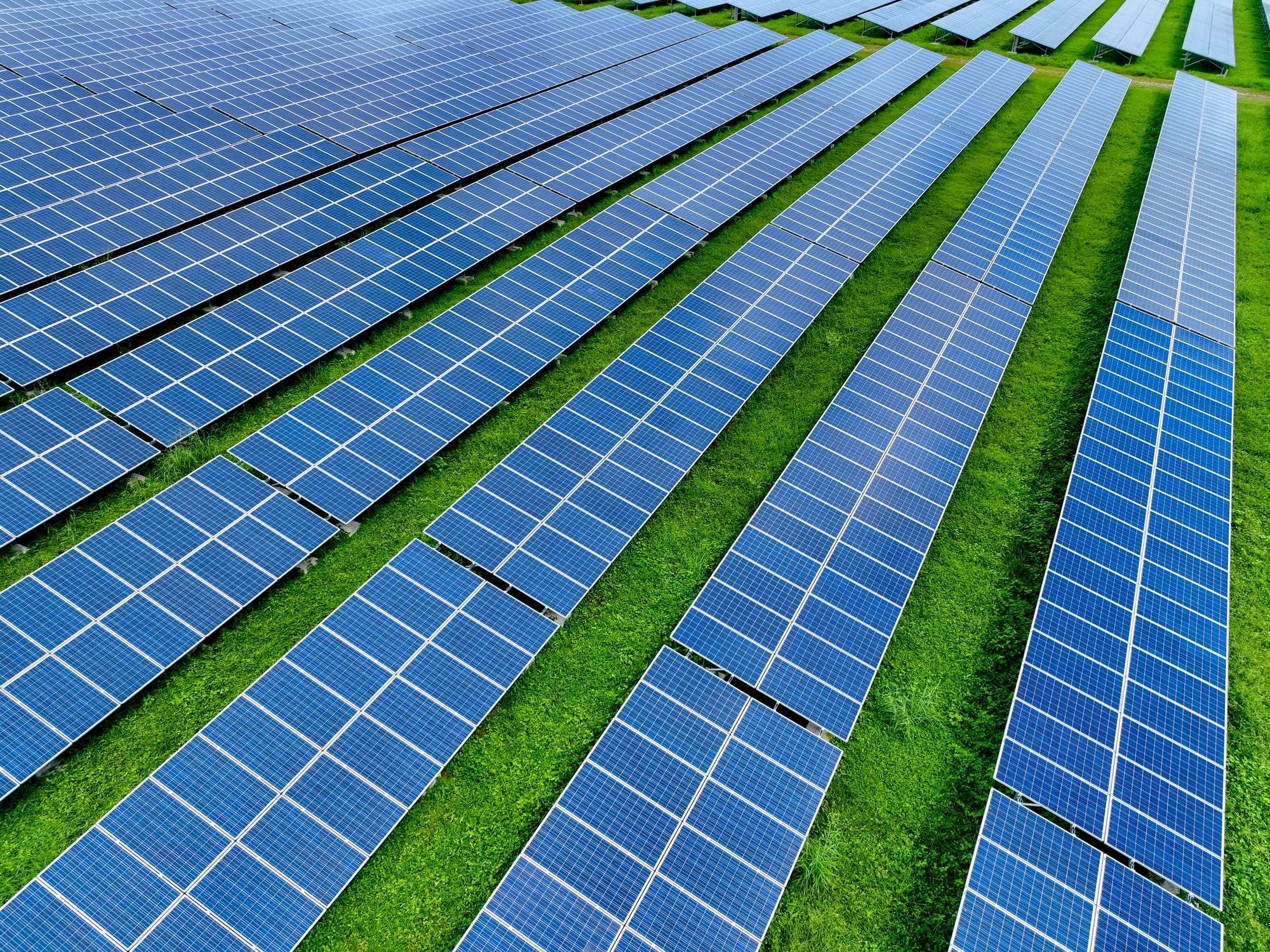SOLAR & HEAT PUMPS

- Monocrystalline Solar Panels:
Made from a single continuous silicon crystal, giving them a uniform dark appearance. They have higher efficiency (18–22%) and power density, so they need less roof space. A typical domestic installation can provide 2–10 kW, depending on roof size and local sunlight. Lifespan is 25–30 years, with very stable output. Best for homes with limited roof space but good sunlight exposure. - Polycrystalline Solar Panels:
Manufactured from multiple silicon crystals melted together, with a speckled blue appearance. Efficiency is slightly lower (15–18%), requiring more space to produce the same output as monocrystalline panels. Domestic arrays provide 2–10 kW similar to monocrystalline, but at a lower cost. Lifespan is 20–25 years. Well suited where roof space is not a limitation and budget is important. - Thin-Film Solar Panels:
Constructed by depositing photovoltaic material (amorphous silicon, CdTe, or CIGS) on a flexible surface. Efficiency is lower (10–12%, sometimes up to 15% for advanced types). They are lightweight and flexible, suitable for non-standard roofs, facades, or portable systems. Domestic systems usually produce 1–5 kW. Lifespan is 10–20 years, shorter than crystalline panels, but installation is easier and cheaper. - Air Source Heat Pumps (ASHP):
Extract heat from outside air and transfer it indoors for heating (or cooling in reverse). They can provide 3–15 kW thermal output for domestic use. Efficiency is measured by Coefficient of Performance (COP), typically 2.5–3.5 (2.5–3.5 units of heat per unit of electricity). Installation is simpler than ground-source systems, but performance drops in very cold climates. - Ground Source Heat Pumps (GSHP):
Use buried pipes (horizontal loops or vertical boreholes) to draw stable ground heat. Provide 5–30 kW thermal output for households. COP is higher than air-source (3.5–5), making them very efficient year-round. More reliable in cold climates but require significant land or drilling. Installation is expensive and disruptive compared to ASHP, but operating costs are low. - Evacuated Vacuum Heat Tubes (Solar Thermal Collectors):
Glass tubes with vacuum insulation absorb solar radiation and convert it to heat, typically for domestic hot water or space heating. Efficiency is high (60–80% solar-to-heat conversion). Domestic systems provide 1–5 kW thermal equivalent, depending on collector area and sunlight. They work well even in colder or cloudy conditions, unlike flat-plate collectors. Lifespan is 15–20 years with low maintenance needs.
✅ Comparison Table for Domestic Solar & Heat Technologies
| Technology | Typical Power/Output | Efficiency | Best Suited For | Pros | Cons |
|---|---|---|---|---|---|
| Monocrystalline Solar PV | 2 – 10 kW electrical | 18–22% | Homes with limited roof space | High efficiency, long lifespan | Higher upfront cost |
| Polycrystalline Solar PV | 2 – 10 kW electrical | 15–18% | Homes with larger roofs, budget-sensitive installs | Lower cost, proven tech | Lower efficiency, needs more space |
| Thin-Film Solar PV | 1 – 5 kW electrical | 10–12% | Unusual roofs, facades, lightweight needs | Flexible, low cost | Lower efficiency, shorter lifespan |
| Air Source Heat Pump | 3 – 15 kW thermal | COP 2.5–3.5 | Most homes, moderate climates | Easy to install, heating & cooling | Less efficient in very cold weather |
| Ground Source Heat Pump | 5 – 30 kW thermal | COP 3.5–5 | Homes with land access, colder climates | High efficiency, year-round reliability | Expensive, requires land/drilling |
| Evacuated Vacuum Tubes | 1 – 5 kW thermal | 60–80% (heat capture) | Domestic hot water, solar heating support | High efficiency, works in cold/cloudy weather | Only produces heat (not electricity) |